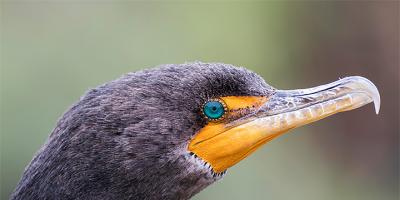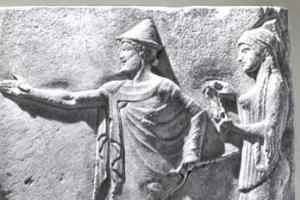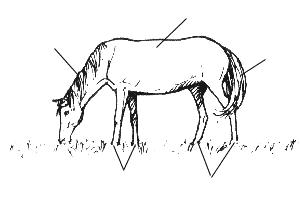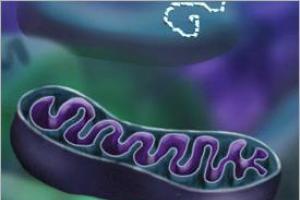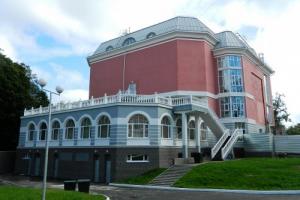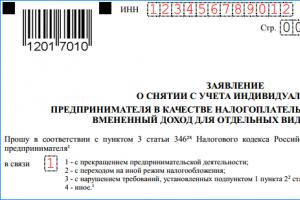Since ancient times, humanity has tried to invent invisible or, as they are also called, sympathetic ink, which is not visible to the eye under normal conditions, but begins to appear after exposure to any chemical elements, heat, or ultraviolet rays. They were used to send secret messages, store important information, secret correspondence.
In ancient times, these were publicly available substances that could be found in every home. For example, secret writing using milk, lemon juice, rice water, wax, apple and onion juice, and rutabaga juice was very successful. Later, options for making sympathetic ink using aspirin tablets appeared, copper sulfate, iodine, washing powder.




Modern UV ink
Science does not stand still, so in our time you will no longer surprise anyone with invisible ink produced industrially. Compositions that glow under ultraviolet lamps. There are even pens with ultraviolet ink available for sale, which can be found in spy stores.
An alternative to such a pen can be invisible anti-counterfeiting paints and pigments. They are powdery substances that can be used to mark banknotes, securities, and clothing. In daylight, the powder is completely indistinguishable, but in ultraviolet light every grain or powder becomes visible.



How to make invisible fluorescent ink at home
As a good fluorescent ink, you can use regular laundry detergent containing optical brighteners. After diluting the powder with a small amount of water, you can begin to write a secret message. The dried solution will not leave imprints on the paper, but will be perfectly visible in the light of an ultraviolet lamp.
Can also be purchased separately. As a rule, they are used to impart whiteness with a bluish tint to clothing, fabrics, and paper intended for printing. The powder can also be used to create sympathetic ink. This ink appears on all types of paper.
Another way to make invisible ink is by using aspirin tablets and alcohol. 2-3 aspirin tablets should be dissolved in a small amount of alcohol. If any sediment remains during dissolution, the liquid should be filtered. After this, you can begin secret writing. Such ink does not glow on all types of paper; this method is not applicable if you write on printer paper.
You can also use the following preparations to prepare ink, which you can try to purchase at the pharmacy:
- curcumin;
- quinine sulfate;
- trypoflamin.
Sodium fluorescein can also be used, but its native color may stand out on white paper after application, so this ink is not invisible.
Market construction technologies does not stand still and periodically surprises consumers with its new products. One of them is ultraviolet paint, invisible in daylight, which is widely used by decorators and designers today.
Its name involuntarily evokes fantastic associations, although in fact it is quite regular material for interior decoration.
Kinds
The range of such products can be divided into two groups:
- luminescent;
- fluorescent.
Each has its own special properties that determine the specifics of their application, as well as a wide range of colors. These materials are based on insoluble and opaque pigments on alkyd or water based. During the day they are practically invisible on light surfaces, while on dark surfaces they appear as whitish marks.
We’ll dwell a little on pigments, since when painting any surface it would be good to know more information about them. For example, each coloring agent has such a characteristic as hiding power, i.e. how much material is required to paint a conventional amount of unit area.
If you take ultramarine pigment, you will need approximately 50 g/1 m2. By the way, not many people know what mineral ultramarine paint is obtained from: natural from lapis lazuli, but artificially- from a mixture of kaolin, Glauber's salt, soda, sulfur and coal.

Azure can be a stand-alone shade or used to enhance color. Now you know what ultramarine paint is made of - from what mineral it was first obtained, and you can always give the correct answer.
Fluorescent
- Invisible paint that glows in ultraviolet light, brightly acidic shades.
- Paint color range:
- lemon;
- yellow;
- blue;
- blue;
- red;
- brown;
- purple;
- mustard;
- purple;
as well as other colors.
- Invisible black acrylic paint does not glow in ultraviolet rays, but makes it possible to create 3D shadows in drawings.

- Material used for design:
- residential premises;
- clubs;
- restaurants;
- and decoration of textiles and sports equipment;
- signal signs.
Luminescent
This type of invisible paint can accumulate light energy, which it then gradually releases, glowing in the dark.
The duration and intensity of the glow depends on:
- pigments and their quality;
- intensity and time of light irradiation of the material;
- base layer colors;
- degree of illumination.
In normal light it has a pale greenish tint, but in the dark it begins to glow brightly with the corresponding color.
Luminescent paints can be used:
- yellow;
- blue;
- green;
- purple;
- orange;
- red.

Invisible luminescent paints can only glow in the following colors:
- blue-green;
- green-yellow;
- blue.
The material has found its application in interior decoration; it is applied with your own hands to wallpaper, as well as other decorative coverings, they decorate decorative elements, including lampshades, candlesticks and vases.
Places of application
For interior
Acrylic-based paint is designed specifically for the protection and decoration of indoor wallpaper. Such materials dry very quickly, have chemical and mechanical resistance, as well as high elasticity. Each one comes with instructions for use.
Special additives in the composition prevent the appearance of mold and fungi on the painted surface.
Used for ceilings and walls made of dense and porous materials:
- bricks;
- cement-lime plasters;
- concrete;
- wallpaper

For metal
They form a glossy transparent coating.
Possess:
- weather resistance;
- increased strength;
- resistance to oils;
- detergents;
- some organic solvents.
Have high level drying, used indoors and outdoors. Used in airbrushing, auto tuning, and painting car rims, in decoration and design of exteriors and interiors.

Advice: when using fire-retardant metal paints Polistil.
Paint bases
Currently invisible luminescent and fluorescent paints can be alkyd or water based.
Let's look at their characteristics below:
- Water-based materials are non-toxic, their price is quite affordable, they do not have a specific odor, therefore they are much more often used for finishing the interiors of residential premises and entertainment venues. In addition, they can be successfully used for the design of facades and other finishing works outside buildings.
The paints are resistant to external influences and are not washed off by rain and snow. They should be applied to previously degreased wooden, glass, metal, fabric and stone surfaces. - The alkyd base can withstand various influences to a greater extent; in addition, it is not washed off from surfaces detergents. Due to toxic fumes when drying, such paints should be used for external decoration.

For example, use compositions when decorating the facades of buildings that will acquire original appearance with appropriate lighting. They are often used to decorate entrances to restaurants, sports clubs, discos, bars and other similar establishments.
Conclusion
If you want to give the interior of a room or house the outside original look, use special luminous paints for this. They come in two types - fluorescent and luminescent, differing from each other in special characteristics. The video in this article will help you find additional information on this topic.
1. Tattoos
Glow tattoos use ink that reacts to black light to make the images glow.
2. Contact lenses
Get the coolest look in town with UV contact lenses that look great during the day and just flatter under UV light.
3. Book
Despite the crisis, the Adris Group had a successful financial year in 2008, so they wanted to boast about it in annual report. In difficult times, only good ideas may shed light on how to get out of the crisis. Ideas are energy! They appear in the blink of an eye and are transmitted at the speed of thought when people come up with them. Ideas are passed from person to person until their greatness becomes strong enough to illuminate the future. The Adris Group company has 3,000 of these lights - these are the company's employees. Each of them can come up with an idea that will make the world a better place, but it is only when they work together towards a common goal that the power of their ideas becomes able to push back the darkness. That's why the book glows in the dark, it's loaded with 3,000 great ideas!
4. Jeans
These jeans will glow brightly under UV light (or black light), so if you wear them to a club, the color of your pants will turn a cool neon green.
5. Soap bubbles
Tekno Bubbles contain special patented substances with molecules that emit visible light after absorbing ultraviolet light. When ultraviolet photons enter fluorescent molecules, some of the light energy causes the molecules to vibrate. When the light reappears, it contains less energy, which is now in the visible light spectrum, which in turn causes the Tekno Bubbles to glow blue or gold.
6. Restaurant
A theatrical extravaganza of sequential dishes and multi-sensory experiences, Paul Pairet's futuristic ultraviolet restaurant turns the very concept of eating on its head. The room, a blank canvas, devoid of emotional art and no distractions, hides the luxury of projectors high class, lighting rigs and wind machines needed for the table show, which begins as scheduled at 7:30 p.m. sharp. After a six-month wait, guests are met at a predetermined location where they are bundled into black vans for transport to an unknown destination, a warehouse in the center of Shanghai.
Guests are led in semi-darkness to one big table, on each side of which there are 5 chairs. As guests are seated, the spectacular culinary theater begins with the amusingly ironic overture to Stanley Kubrick's 2001 A Space Odyssey.
Topped by an extravagant 20-course "Avant-garde" menu, the dining room transforms into a 360-degree projection theater. Part of the show is a billowing tornado of smoke and cigar ash, timed to coincide with your first bite of foie gras made into a cigarette. Next comes the Pop Rock Oysters, with a projection based on the theme of musical legends of the 60s and inventions of the 20th century. Using a combination of pungent aromas of cigar smoke, earth and ocean breeze, Paire creates a unique "psycho-tasting" experience that may well challenge the future of fine dining as we know it today.
7. Toilet paper
Now, thanks toilet paper glowing in the dark, you don’t have to scour the dark looking for it, during half-asleep visits to the toilet, in the middle of the night. Functional and fun, plus you'll know you're dry when the paper stops glowing.
8. Graffiti Art
Japanese artist Que Huxo creates cool paintings that glow in the dark. This exhibition is called "Day and Night". Just ah!
9. Airbrush design on a car
“English Russia” offers a look at the design of the airbrush design on the Toyota MRS, which is owned by a Russian. He looks great during the day, and also better at night, as the paint glows in the dark.
10. Tennis sneakers
We all know that "Yeezy" is Kanye West's nickname, and he worked with Nike a few years ago to create new sneaker designs. The glow-in-the-dark Nike Air Yeezy sneakers are the result of this collaboration. And they look just cool - the bottom of the sneakers glows, as does the signature Nike logo. Their production started in 2009.
11. Candy
Instructables user Britt Michelsen recently experimented with fluorescent materials, including riboflavin. She decided to use it to create food that looks like kryptonite. Michelsen made the molds from aluminum foil, added riboflavin to the sugar and poured it into the mold. The result was glowing candy that looked like the lethal substance from the Superman mythos.
Few people know, but a grandiose light show is constantly happening around us, which we, unfortunately, do not see. The fact is that many arthropods (insects, spiders, etc.) have one interesting feature: They glow under ultraviolet light.
Fireflies and other animals endowed with the ability of bioluminescence glow due to chemical reaction, occurring in special organs of luminescence. Many people have seen this phenomenon. But scorpions, some spiders and a number of related organisms are capable of producing a blue-green glow using the phenomenon of fluorescence.
 Crab spider fluorescence
Crab spider fluorescence The molecules of the exoskeleton (outer shell) of these animals absorb ultraviolet light (320-400 nm) invisible to our eyes, after which they re-emit the ultraviolet into bluish light visible to us.
 It turns out that many arthropods glow under ultraviolet light
It turns out that many arthropods glow under ultraviolet light Photographer Niki Bey (his photographs, along with mine, were used in the article about) took a series of wonderful photographs of the bioluminescence of arthropods, with which I illustrated this text.
Why do arthropods glow in ultraviolet light?
In short: for many of the animals that fluoresce, we don't know why. There is a lot of literature about the glow of various arthropods, the main idea of which can be reduced to: “Wow! It glows!!!"
 Kiwis also fluoresce in UV light
Kiwis also fluoresce in UV light True, for scorpions the mechanism of this glow has been studied in more detail.
Scorpions exhibit so-called cuticular fluorescence. It involves two compounds found in the scorpion epicuticle: beta-carboline and 4-methyl, 7-hydroxycoumarin. Coumarin, by the way, is used in perfumes or as a cinnamon-flavored flavoring.
 The fluorescence of scorpions is a very beautiful phenomenon
The fluorescence of scorpions is a very beautiful phenomenon There are a couple of hypotheses regarding the purpose of scorpion fluorescence. Most insects can see ultraviolet light, so their world looks very different from ours.
 Spider Heteropoda sp. through the eyes of man and insect
Spider Heteropoda sp. through the eyes of man and insect According to some experiments, scorpions can use their ability to absorb ultraviolet light to find shelters. During the experiment, scorpions were fitted with tiny glasses, due to which the animals could not see with their eyes. But as soon as the UV light was turned on, the animals quickly found suitable shelters. Apparently, orientation occurred due to signals received from surface integuments that absorbed ultraviolet light (published in the journal Animal Behavior).
 Perhaps ultraviolet helps scorpions navigate
Perhaps ultraviolet helps scorpions navigate According to another version, the glow of scorpions in ultraviolet light is a relic of the early Devonian period, when the earth was inhabited by giant scorpions and centipedes. Substances accumulated in the integument, capable of absorbing ultraviolet radiation and emitting blue light, could protect ancient arthropods from sunburn. At least in young plant seedlings, it is coumarin that acts as a sunscreen.
Ultraviolet is a part of the spectrum of electromagnetic radiation that is beyond the boundaries of our perception. In other words, invisible radiation. But not really. The light we see is limited to wavelengths between 380 nm and 780 nm (nanometers). The wavelengths of ultraviolet or ultraviolet radiation range from 10 nm to 400 nm. It turns out that we can still see ultraviolet light - but only a small part of it, located in a small interval between 380 and 400 nm.
All. Dry facts are over, interesting facts begin. The fact is that this barely visible radiation actually plays a huge role not only in the biosphere (we will definitely talk about this separately), but also in lighting. Simply put, ultraviolet helps us see.
Ultraviolet and lighting
Ultraviolet has found its main use in lamps. Electrical discharges cause the gas inside a fluorescent lamp (or compact fluorescent lamp) to glow in the ultraviolet range. In order to obtain visible light, a special coating of material is applied to the walls of the lamp that will fluoresce - that is, glow in the visible range - under the influence of ultraviolet radiation. This material is called a phosphor, and manufacturers are constantly working to improve its composition to improve the quality of visible light produced. That is why today we have a good selection fluorescent lamps, which not only outperform conventional incandescent lamps in energy efficiency, but also produce light that is quite pleasant to the eye, with an almost full spectrum.
What other uses can ultraviolet light have?
Exists whole line materials that can glow in ultraviolet light. This ability is called fluorescence and many organic substances have it. In addition to it, there is also the so-called phosphorescence - its difference is that the substance emits light with a lower intensity, but continues to glow for some time (often quite long - up to several hours) after the cessation of exposure to ultraviolet radiation. These properties are actively used in the manufacture of various “glow in the dark” objects and jewelry.


